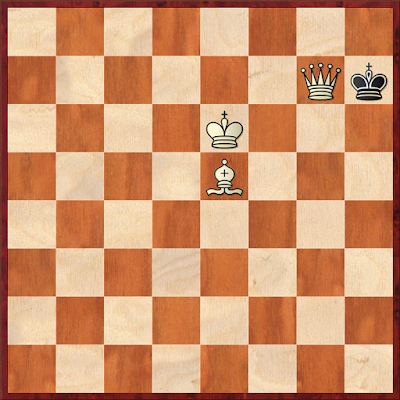Game Analysis #11: Travesty
 |
| Final position, 1-0 |
One cannot blame two novices when they make mistakes in chess, only in hindsight would they find their decisions somewhat folly or ludicrous, but through lack of a solid foundation perhaps or limited imagination or want of creativity for ideas. No matter how structured chess study is and how monotonous especially with the advent of chess engines and programs in computers, there still lies in the core of chess, the love for new ideas and ingenuity, with pieces gliding about on the board trying to encircle the enemy monarch, the king stripped of his defenses.
Still, chess is a game of wit, of boldness, audacity, of cunning, and of an inspired imagination, of creativity. There is no doubt about it but perchance here I find in one of earlier games, a game that lacks much of these and I will endeavor to analyze it with much care as to the reasons why such moves were played, for what purpose and to what end. Now, let's get on with it.
It was quite a long game and quite crazy in fact because as I looked at the progression of moves, I thought how awkward most of them were at times hanging certain pieces and in other times, simply wasting time instead of placing the pieces in good, strategic squares. Black's blunder on move 10, hanging his knight which was the only threat that he should have considered at that point, somehow sealed his fate because that enabled White to have a permanent advantage throughout the game. Black was not able to recover his piece which he neglected.
Being down in material and development, Black was slowly digging his own grave. Sacrificing his bishop was the final nail in his coffin because he is left to fend with only a rook and a couple of pawns which were quite loose and easily plundered. In the end, White was able to queen one of his pawns and checkmate Black. That is not to say that White was not without fault especially in the early stages of the game. It was just that Black's mistakes were more grave.


Comments
Post a Comment